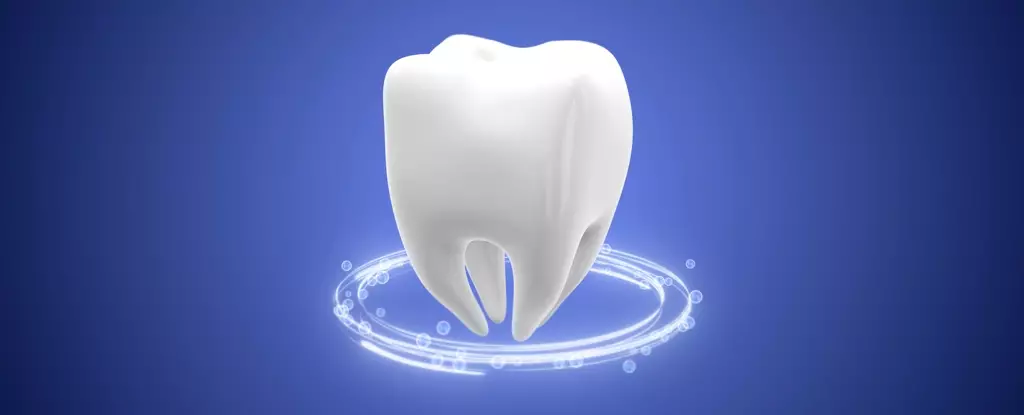The notion of growing teeth in a laboratory often raises eyebrows and conjures images of dystopian films where science spirals out of control. Yet, as fantastical as it might sound, the development of lab-grown teeth embarks on an intriguing intersection between modern dental medicine and the realm of genetic innovation. Researchers at King’s College London and Imperial College London have unveiled a groundbreaking hydrogel that revolutionizes the possibilities of oral health. In an age where technology consistently challenges the boundaries of nature, this innovative approach could transform how we understand and address dental health issues.
Significance of Cell Communication in Regenerative Dentistry
At the core of this fascinating research is the emphasis on enhancing cell communication. The new hydrogel developed by the KCL and ICL team acts as a scaffold, fostering collaboration between dental epithelial and mesenchymal cells derived from mice embryos. This biological teamwork replicates the natural processes our bodies already utilize. The proper functioning of this cellular communication could pave the way for regenerating lost or damaged teeth, ultimately offering a more natural remedy than traditional fillings or implants that often come with complications such as rejection or decay. As PhD candidate Xuechen Zhang states, “Lab-grown teeth would naturally regenerate, integrating into the jaw as real teeth.” Such implications suggest a transition from treating dental issues with mere palliative solutions to genuinely addressing them at the biological level.
A Paradigm Shifting Clinical Approach
More than just the science behind the hydrogel, the implications for dentistry are profound. Dental injuries could heal similarly to skin cuts, naturally repairing without invasive procedures. If we can trigger our body’s innate repair mechanisms, we may not only enhance individual oral health but could also significantly improve our overall healthcare framework. Previous attempts to engineer dental growth faltered primarily because they did not accurately simulate our biological processes. This new technology adopts a slow-release signal method, which closely mirrors natural physiological interactions over time—a clear improvement that could genuinely translate into real-world applications.
Navigating the Challenges Ahead
However, the road ahead is fraught with challenges. The striking ambition of replicating this laboratory environment within the complexity of the human mouth remains. The idea of transplanting lab-grown cells or teeth could face both scientific and ethical inquiries, impacting regulatory practices. Deliberations surrounding patient safety, consent, and the societal implications of such advancements will shape the future trajectory of this research. We find ourselves standing at the precipice of a promising yet contentious realm of dental care that threatens to redefine our established understanding of oral health and treatment pathways.
Nature as a Teacher: Learning from Others
Interestingly, our biological limitations as humans contrast sharply with certain species in nature, which possess the capability to regenerate teeth. While we remain distant from achieving such natural abilities, our persistent quest for self-repair mechanisms through innovative research keeps us striving for advances that may seem outlandish today but could become commonplace tomorrow. The exploration of antibody treatments for anodontia—an affliction barring tooth growth—suggests that we are on the brink of significant breakthroughs. Setting our sights on practical solutions that could become available in this decade demonstrates that the narrative is slowly shifting from fantasy to realization.
Broader Implications of Tooth Regeneration
Moreover, the implications of effective tooth regeneration extend beyond merely pampering our aesthetics or addressing bad habits like neglecting oral hygiene. Acknowledging the intricate links between oral health and overall physical well-being opens a dialogue about holistic healthcare approaches. The potential for innovations in dental care could significantly alleviate socioeconomic disparities in access to such treatments. As Dr. Ana Angelova Volponi posits, the integration of these state-of-the-art techniques may eventually lead to a paradigm shift in our healthcare system, promoting sustainability and efficacy in restoration processes.
Tooth regeneration is not merely a matter of vanity; it represents an evolving horizon where technology and biology converge, promising a future where our physical inadequacies could be attended to with a deeper understanding of who we are as both biological systems and social beings. In this quest, we might uncover that the very fears surrounding the encroachment of science upon nature are, in fact, the stepping stones towards a healthier society.

